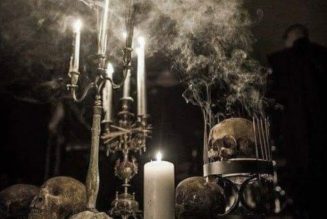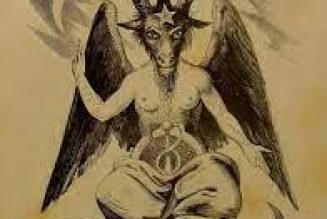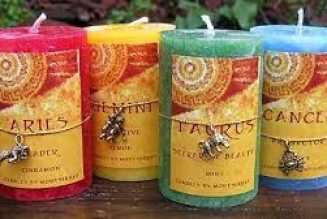
Krampus is meant to whip children into being nice.
When listening to the radio in December, it’s unlikely to hear holiday songs singing the praises of Krampus:
a half-goat, half-demon, horrific beast who literally beats people into being nice and not naughty.
Krampus isn’t exactly the stuff of dreams: Bearing horns, dark hair, fangs, and a long tongue, he comes with a chain and bells that he lashes about, along with a bundle of birch sticks meant to swat naughty children. He then hauls the bad kids down to the underworld.
You better watch out . . .
St. Nicholas is the patron saint of children. His saints day falls in early December, which helped strengthen his association with the Yuletide season. Many European cultures not only welcomed the kindly man as a figure of generosity and benevolence to reward the good, but they also feared his menacing counterparts who punished the bad. Parts of Germany and Austria dread the beastly Krampus, while other Germanic regions have Belsnickle and Knecht Ruprecht, black-bearded men who carry switches to beat children. France has Hans Trapp and Père Fouettard.
Krampus’s name is derived from the German word krampen, meaning claw, and is said to be the son of Hel in Norse mythology. The legendary beast also shares characteristics with other scary, demonic creatures in Greek mythology, including satyrs and fauns.
The legend is part of a centuries-old Christmas tradition in Germany, where Christmas celebrations begin in early December. Krampus was created as a counterpart to kindly St. Nicholas, who rewarded children with sweets. Krampus, in contrast, would swat “wicked” children, stuff them in a sack, and take them away to his lair.
According to folklore, Krampus purportedly shows up in towns the night of December 5, known as Krampusnacht, or Krampus Night. The next day, December 6, is Nikolaustag, or St. Nicholas Day, when children look outside their door to see if the shoe or boot they’d left out the night before contains either presents (a reward for good behavior) or a rod (bad behavior).
A more modern take on the tradition in Austria, Germany, Hungary, Slovenia, and the Czech Republic involves drunken men dressed as devils, who take over the streets for a Krampuslauf—a Krampus Run of sorts, when people are chased through the streets by the “devils.”
Participants dressed as the Krampus creature walk the streets in search of delinquent children .
Krampus is coming to town
Krampus’s frightening presence was suppressed for many years.
But Krampus has been having a resurgance over the past few years, thanks partly to a “bah, humbug” attitude in pop culture, with people searching for ways to celebrate the yuletide season in non-traditional ways. In the United States, people are embracing the dark side of Christmas with Krampus movies, special “Krampus” television episodes. They’re throwing Krampus parties, attending local Krampusnachts and running in Krampus-themed races.
For its part, Austria is attempting to commercialize the harsh persona of Krampus by selling chocolates, figurines, and collectible horns. There are already complaints that Krampus is becoming too commercialized and losing his edge because of his newfound popularity.







